AMD Announces $55 Athlon 200GE With Vega Graphics, Second-Gen Ryzen Pro CPUs
AMD is keeping the 20-year legacy of the Athlon brand alive with its new Athlon 200GE processors that come armed with Radeon Vega 3 graphics. AMD is bringing the new dual-core, four-thread Athlon 200G processor to market on Sept 8 for a mere $55. But it will be joined by beefier 220GE and 240GE processors in Q4 2018.
AMD is also introducing an Athlon Pro 200GE model and the new second-gen Ryzen Pro series for the professional/commercial market. The Ryzen 7 Pro 2700X, Pro 2700, and Ryzen 5 Pro 2600 models will come to market this year, but will debut in OEM systems from Dell, HP, and Lenovo. Launch times will vary by company.
AMD Athlon 200GE, 220GE, 240GE
| Row 0 - Cell 0 | Athlon 200GE | Pentium Gold G5600 | Pentium Gold G5400 | Ryzen 3 1300X | Ryzen 3 2200G | Ryzen 5 2400G |
| TDP | 35W | 54W | 54W | 65W | 65W | 65W |
| Architecture | Zen | Coffee Lake | Coffee Lake | Zen | Zen | Zen |
| Process | 14nm | 14nm++ | 14nm++ | 14nm | 14nm | 14nm |
| Cores / Threads | 2 / 4 | 2 / 4 | 2 / 4 | 4 /4 | 4 / 4 | 4 / 8 |
| Frequency Base / Boost | 3.2 / - | 3.9 / - | 3.7 / - | 3.5 / 3.7 | 3.5 / 3.7 | 3.6 / 3.9 |
| Memory Speed | DDR4-2677 | DDR4-2400 | DDR4-2400 | DDR4-2667 | DDR4-2933 | DDR4-2933 |
| Memory Controller | Dual-Channel | Dual-Channel | Dual-Channel | Dual-Channel | Dual-Channel | Dual-Channel |
| Cache (L3) | 4MB | 4MB | 4MB | 8MB | 4MB | 4MB |
| Integrated Graphics | Radeon Vega 3 (3CU) | UHD Graphics 630 | UHD Graphics 610 | No | Radeon Vega 8 (8CU) | Radeon Vega 11 (11 CU) |
| Unlocked Multiplier | No | No | No | Yes | Yes | Yes |
| MSRP | $55 | $86 | $64 | $124 | $99 | $160 |
AMD's Bristol Ridge A-series APUs aren't competitive with today's low-cost Intel models, but the Athlon 200GE marks the first Zen-based processor to attack the sub-$100 market where Intel's Pentiums (like the Pentium Gold G5600 And G5400) and Celerons reign uncontested. AMD hasn't released any details about the 220GE and 240GE yet (not even basic core counts), but we'll learn more as they come to market later this year.
The 35W Athlon 200GE comes at a mere $55 and drops into motherboards with the AM4 socket. The Athlon 200GE features the Zen microarchitecture paired with the Radeon Vega graphics engine. The processor has two execution cores and four threads, while the integrated Vega graphics engine comes with 3 Compute Units (CU). The 2C/4T processor has a 3.2 GHz base frequency and no boost. The 200GE's Radeon Vega graphics boost up to 1000 MHz.
The Athlon 200GE comes with a locked multiplier, making it the only non-overclockable Zen-based model in AMD's fleet. This class of processor is a natural fit for lower-end AM4 motherboards with the A320 chipset. You can find those for as low as $50, and you still retain the option to step up to beefier Ryzen models in the future. You also get the benefit of USB Gen2 3.1 and NVMe (though features vary by board). The processor also comes with a bundled cooler, which is a real plus for a $55 part.
The A320 chipset doesn't support overclocking the CPU, but AMD says it does support memory overclocking. The lack of an unlocked multiplier is surprising given AMD's history with unrestrained feature sets, but as we've shown, tuning the memory boosts Vega graphics performance significantly.
The Athlon 200GE does support the AVX instruction set, which is an advantage over Intel's Pentium and Celeron families. The new Athlon processors likely feature the same underlying design as the Raven Ridge 2200G and 2400G processors, albeit with a pared-down feature set that allows the company to sell Raven Ridge die that suffered defects during the manufacturing process.
Get Tom's Hardware's best news and in-depth reviews, straight to your inbox.

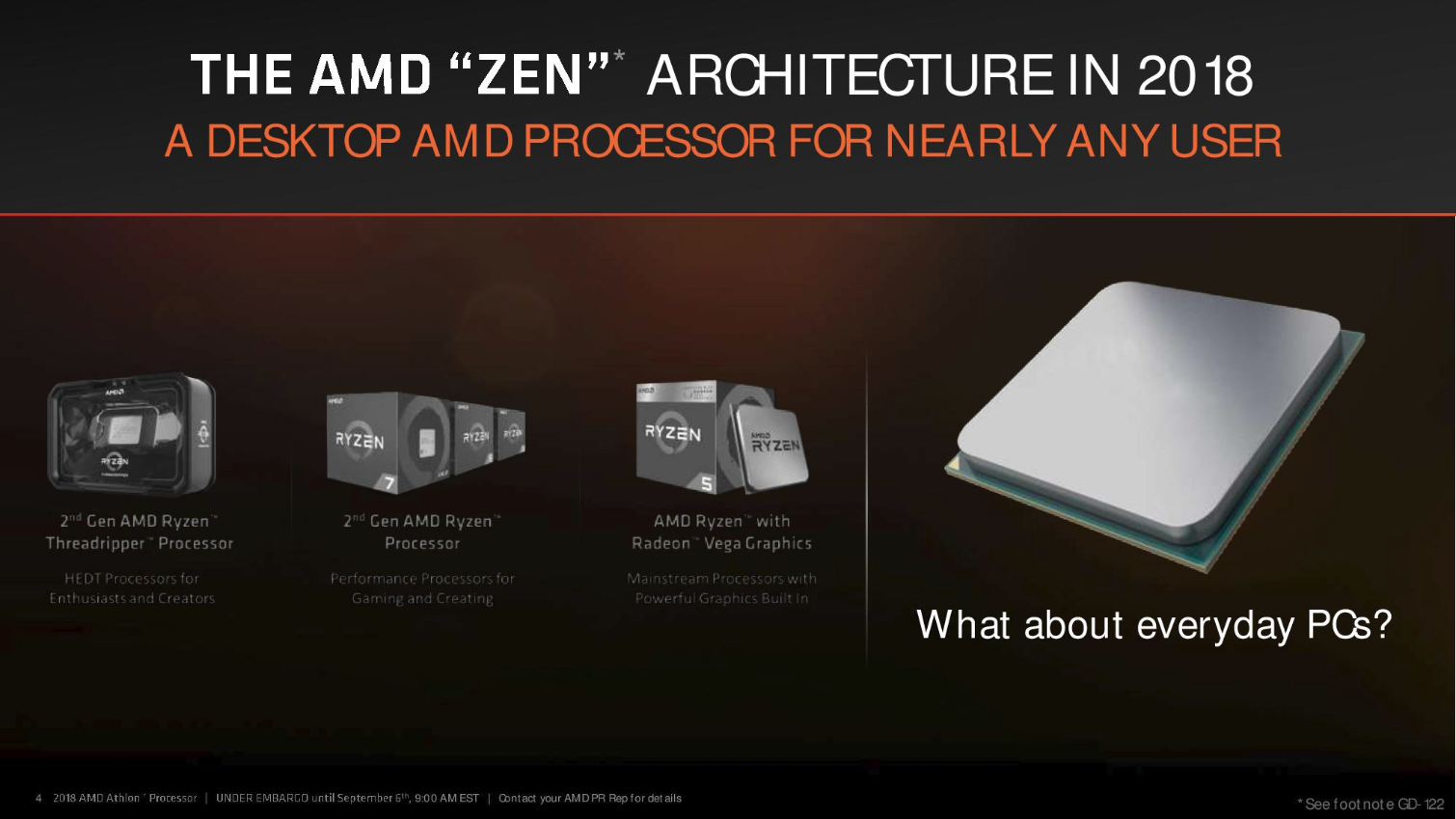







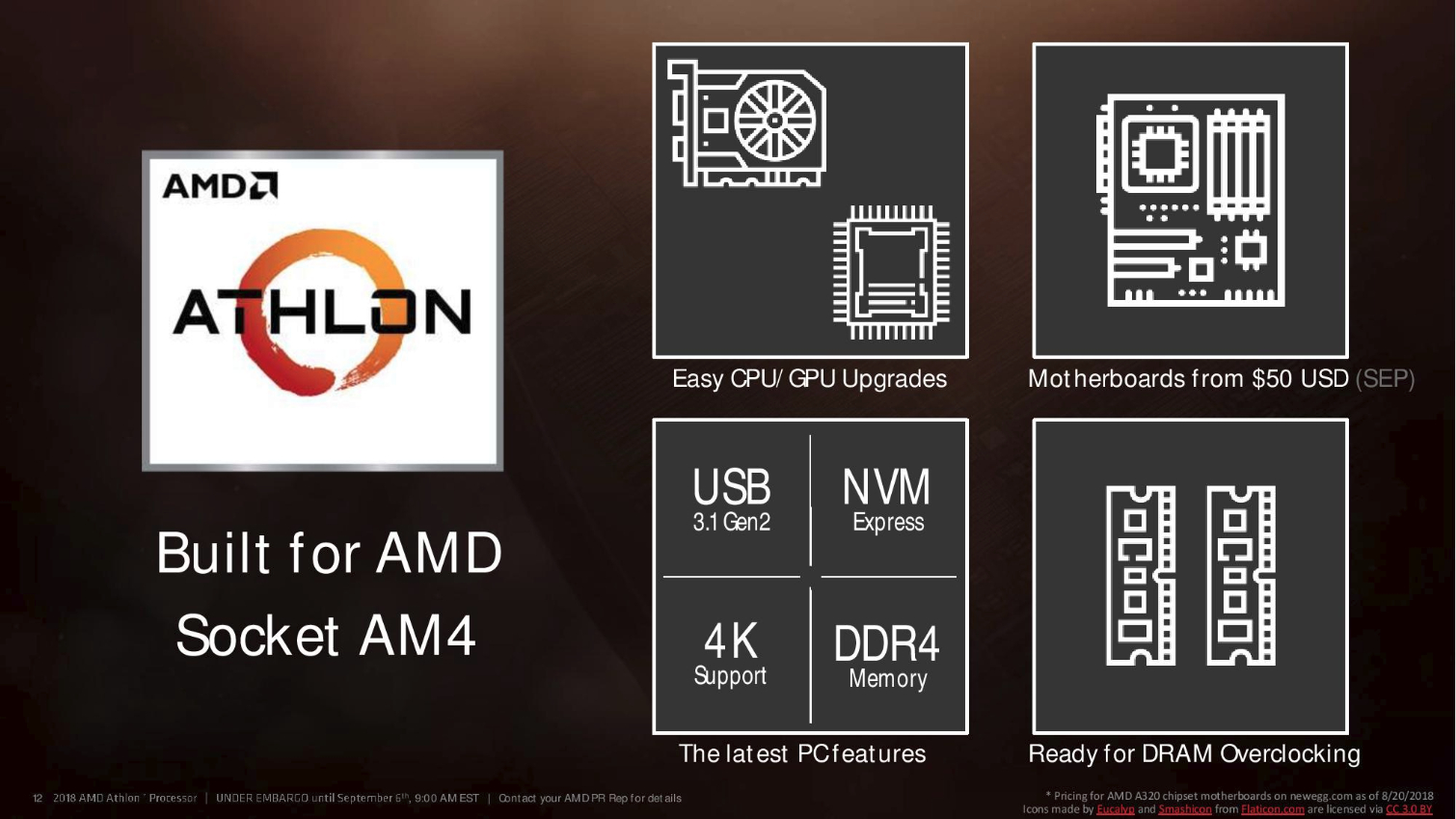





AMD didn’t design the new Athlon processors for world-beating performance, but the company says they are a good match for basic computing tasks, like low-end gaming, web browsing, and simple office workloads. AMD will continue to produce the Athlon x64 and A-series APU processors, but the new Athlon lineup is designed to attack strategic price points in the sub-$100 market.
AMD provided performance comparisons between the Athlon 200GE, AMD's A10-9700, and the Pentium G4560. The G4560 represents Intel's last-gen silicon, and as we covered in our recent review, the current-gen G5400 offers much more performance at the same $64 price point. That means these benchmarks aren't representative of Intel's current products. As with all vendor-provided benchmarks, take them with a grain of salt.
The Athlon 200GE only comes with 3 Vega CUs, which is quite the step down from the Raven Ridge 2200G's eight CUs. AMD claims the Athlon 200GE can handle 720p gaming with integrated graphics in various eSports-class titles, and also claims the processor provides enough performance to deliver solid performance when paired with a discrete graphics card, like the Nvidia GeForce GTX 1050. AMD claims the processors lag behind the Pentium G4560 by roughly 3 percent during CPU workloads, but offer up to 67% more GPU performance. The integrated Radeon Vega graphics also support AMD's variable-refresh FreeSync for compatible monitors.
Athlon Pro 200GE, Ryzen 7 Pro 2700X, Pro 2700, and Ryzen 5 Pro 2600




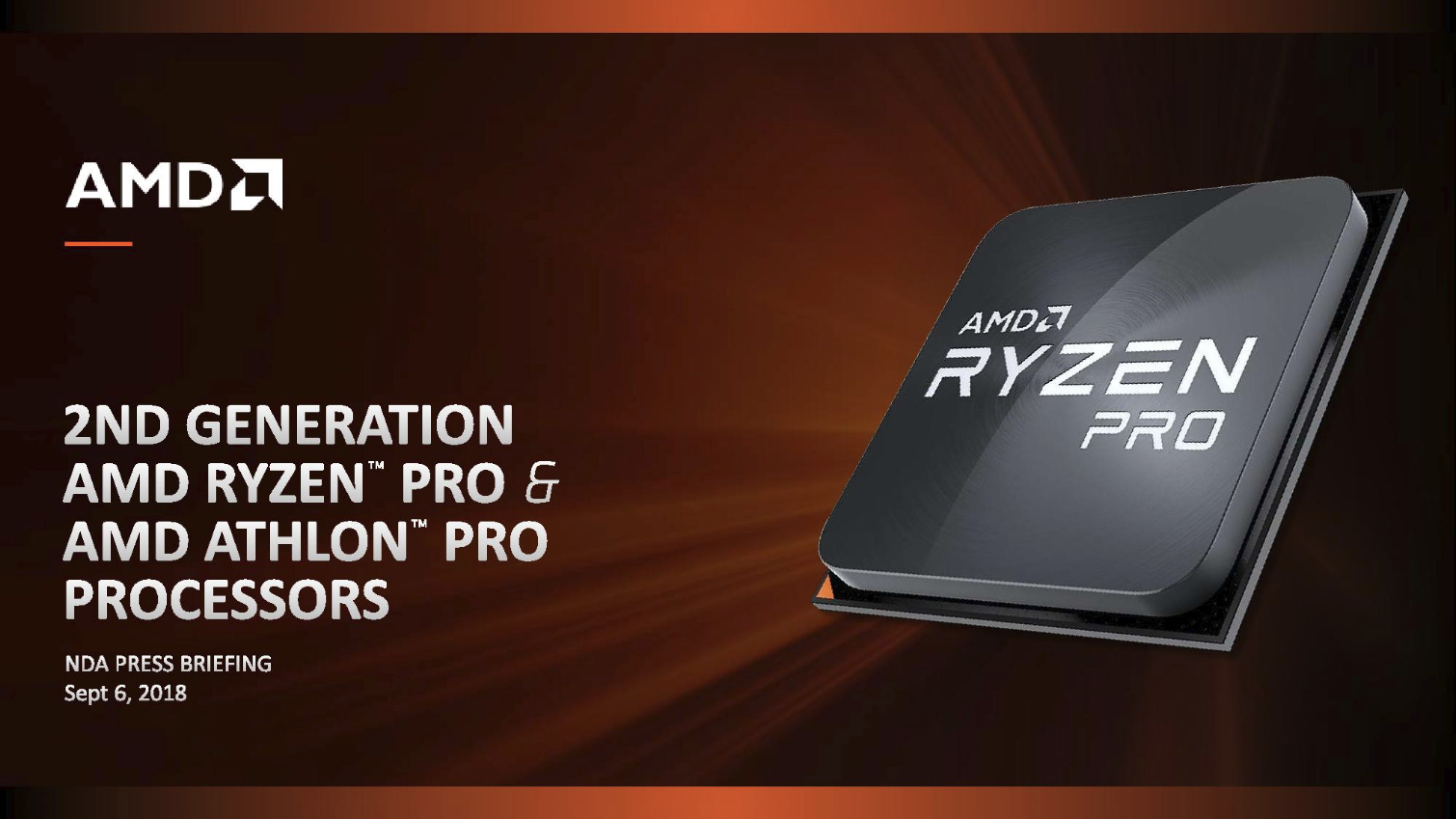



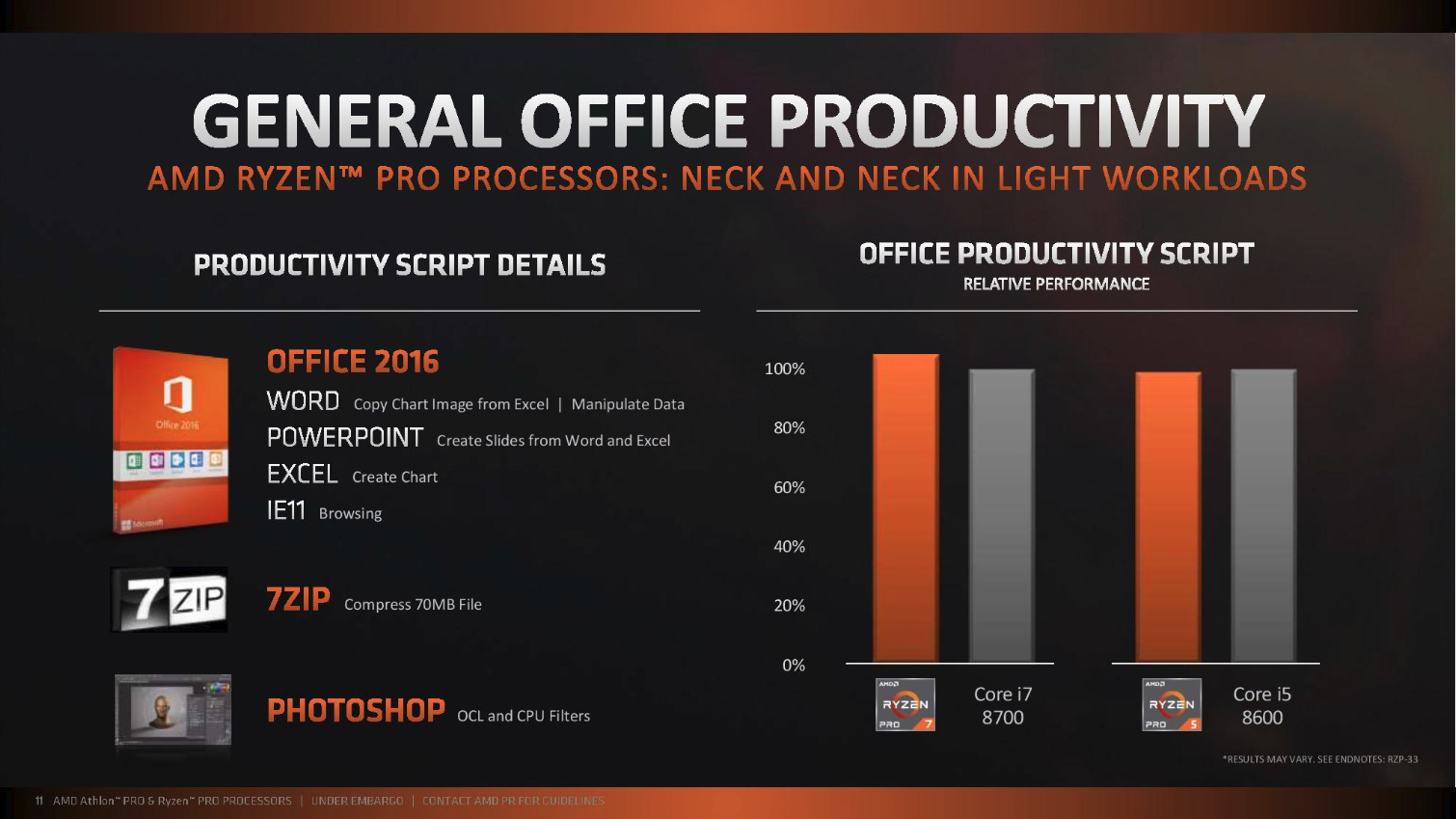


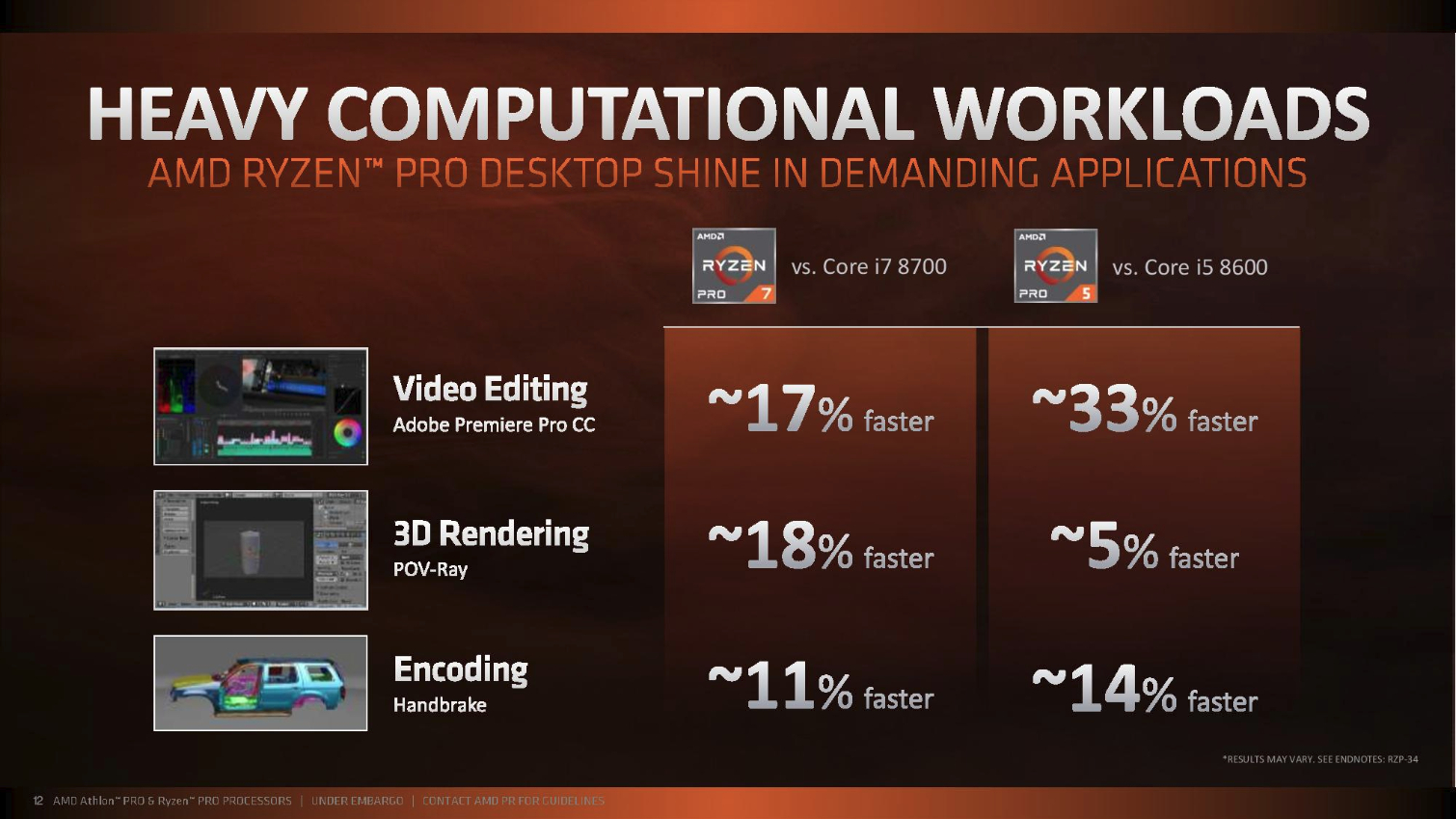













AMD's Pro series processors bring the goodness of the new Athlon 200GE and the second Gen Ryzen models to the commercial market. These processors feature the same specifications as their mainstream desktop counterparts, like the standard Ryzen 7 2700X, 2700, and Ryzen 5 2600, but come with specific features that cater to the needs of the commercial market.
That includes a dedicated security co-processor to boost security features, integrated cryptographic accelerators, the Transparent Secure Memory Encryption (TSME) feature, a long-term image stability guarantee, and longer warranty periods. As noted, these are the same features present on the first-gen Ryzen Pro models, which we've covered in-depth in our AMD Launches Ryzen Pro Series article.
The Ryzen Pro models will come to market through OEMs like Dell, Lenovo, and HP, but they have their own respective launch schedules that AMD will share as they become available.

Paul Alcorn is the Editor-in-Chief for Tom's Hardware US. He also writes news and reviews on CPUs, storage, and enterprise hardware.
-
jeremyj_83 Using that Athlon and a A320 chipset you could make a nice and cheap HTPC and have it passively cooled.Reply -
SoerenHedemand I've built passively cooled systems based on Ryzen 5 2400G in Streacom FC8 Alpha Chassis. They run a little hotter than I normally like, but they are rock solid.Reply -
gggplaya When you test this processor Tom's, please try it as a Plex Server and see how many 1080p transcode streams it can do.Reply -
Rdslw SoerenHedemand:Reply
being passive with single slow fan that will help a bit is not much louder than my neighbour snoring though the wall. It's not 100% passive, but virtually I could not hear its running.
Noctua NF-A20 PWM 200mm x 30mm PWM 4-pin Fan
From 59.3 CFM, 10.7 dBA at 550 RPM
still I want piko sized PC with this. -
bloodroses While it's nice that AMD released something into that price market, it sounds like it will be a chip that doesn't do any one thing good enough to really be that viable vs other options. The locked multiplier/low clock speed does definitely hurt it and the minimal number of CUs will barely scrape by for lower res/graphic gaming. I'm guessing they're relying on the low TDP to be their selling point. Until actual benchmarks come in, I can't say for sure.Reply
Comparing/benchmarking this to chips like the Celeron G4900T, Pentium 5400/5500T, and other 'T' series chips should be considered along with the G5400/G5600 listed. -
gggplaya Reply21298021 said:While it's nice that AMD released something into that price market, it sounds like it will be a chip that doesn't do any one thing good enough to really be that viable vs other options. The locked multiplier/low clock speed does definitely hurt it and the minimal number of CUs will barely scrape by for lower res/graphic gaming. I'm guessing they're relying on the low TDP to be their selling point. Until actual benchmarks come in, I can't say for sure.
Comparing/benchmarking this to chips like the Celeron G4900T, Pentium 5400/5500T, and other 'T' series chips should be considered along with the G5400/G5600 listed.
I don't think anyone would consider this for modern gaming, it's a 35w chip. I would use a 2200G 65w chip for only $45 more if you're doing light gaming.
As a 35w chip, I could see this being used for NAS server, Plex Server, Surveillance Server, HTPC, Kiosk CPU, or light commercial workstation. Basically any computer you want to keep on 24/7 but don't want it to use alot of electricity. Also for AIO PC Monitors for web browsing and microsoft office. This chip looks comparable to my core i5 4570T which I use as a Plex server which can CPU transcode 2 1080p streams simultaneously. iGPU transcoding looks aweful at low bitrates before anyone says get an intel chip.
This chip wouldn't be bad to build a mini-ITX HTPC/Plex server.
-
salgado18 I see this only as a low power CPU. If power and heat are not a problem, the G5400 should be much faster for not much more money. GPU must be benchmarked, but probably not that much better.Reply
Hopefully the other Athlons up the clocks for little money, and then become competitive. -
bloodroses Reply21298088 said:21298021 said:While it's nice that AMD released something into that price market, it sounds like it will be a chip that doesn't do any one thing good enough to really be that viable vs other options. The locked multiplier/low clock speed does definitely hurt it and the minimal number of CUs will barely scrape by for lower res/graphic gaming. I'm guessing they're relying on the low TDP to be their selling point. Until actual benchmarks come in, I can't say for sure.
Comparing/benchmarking this to chips like the Celeron G4900T, Pentium 5400/5500T, and other 'T' series chips should be considered along with the G5400/G5600 listed.
I don't think anyone would consider this for modern gaming, it's a 35w chip. I would use a 2200G 65w chip for only $45 more if you're doing light gaming.
As a 35w chip, I could see this being used for NAS server, Plex Server, Surveillance Server, HTPC, Kiosk CPU, or light commercial workstation. Basically any computer you want to keep on 24/7 but don't want it to use alot of electricity. Also for AIO PC Monitors for web browsing and microsoft office. This chip looks comparable to my core i5 4570T which I use as a Plex server which can CPU transcode 2 1080p streams simultaneously. iGPU transcoding looks aweful at low bitrates before anyone says get an intel chip.
This chip wouldn't be bad to build a mini-ITX HTPC/Plex server.
The main reason why I had mentioned about gaming was due to the article saying this can be used for 720p esports according to AMD. I can't imagine anyone considering this chip for gaming either.
As with the iGPU transcoding, that would be an interesting test between the AMD and Intel chips as it would be a good selling point in that regard.
With the i5 4570T, it does have the advantage of turbo boost frequency (up to 3.6ghz); something the 200GE, 5400T, and 5500T doesn't have.
I'm not saying that it'd be bad for a NAS/HTPC/Plex server. It just seems there are better options out there already; and at 35w. -
Paul Alcorn Reply21297875 said:Paul, another launch and still no sign of "14nm+" in AMD's marketing materials. :D
Alright Pinky, now ya done did it. :P I specifically did not mention 14nm+ here because I mean to get further clarification on the matter before I expand on the topic. But, for now, know that 14nm+ does exist with AMD products, if in name only:
Exhibit A:
http://i517.photobucket.com/albums/u332/paullie1/14nm%2012.jpg
EXHIBIT B:
http://i517.photobucket.com/albums/u332/paullie1/14nm%201.jpg

